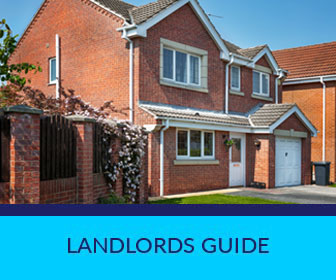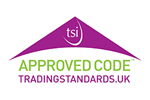Check Out Our Landlord's Quick Guide
Getting the property ready for rental
Now that you have decided to rent out your property you will want to maximise the letting potential by making sure you address the condition, the quality of the presentation and attention to detail. The most important thing to remember is that you are not going to be the one living in the property, so your personal taste should take second place to what the market demands. Better properties tend to attract better tenants and yield the highest rents.
Exterior
The first thing that a potential tenant sees is the front of the property, so the exterior should be in good, fresh decorative order. Any pathways and driveways should be cleared of weeds and should be tidy, presentable and rubbish free.
Trim hedges, mow the lawn, repair any cracks, holes or blemishes or walls, give the windows a lick of paint and make sure the house number is clearly visible.
If you are letting a garage with the property, this should also be cleared and made ready for use. The garden should also be tidy and presented in an attractive manner, dig up any dead or unsightly plants and if possible add some new ones.
Utility Services
Ensure that all available utilities are connected to the property including, telephone line, gas, water and electricity. Where provided, check any LPG/OIL tanks are in working condition and full and that any septic tanks attached to the property are emptied.
Furnishings, Carpets, Curtains & General Interior
Your property can be let fully furnished, part furnished or non-furnished, this will be entirely up to you. We can advise you at the time on whether to furnish or not, and to what level.
You'll find that most tenants prefer plain, neutral colours for decoration and you will also need to take in to consideration wear and tear, especially on carpets.
Carpets should be good quality, practical and hard wearing, it may also be appropriate to fit wooden floors in some of the rooms. Whatever you decide, it should be good enough to last.
Bathrooms should have a good quality shower, and Kitchens, ideally, will be well equipped and functional. Again, good quality is important in these areas.
ALL electrical, plumbing, waste, central heating and hot water systems MUST be safe, sound and in good working order.
Any instruction/operating manuals for any appliances and electrical equipment should be left in the property. Details of any maintenance contracts should also be supplied.
Before the commencement of a tenancy the whole property should be made clean throughout.
Other Important Considerations
Do you have a mortgage on the property? - If you have a mortgage on the property that you intend to let then you will need written permission from your mortgage lender. Depending on who your lender is will determine whether they want to include extra clauses within the tenancy agreement.
Is your property held on a Lease? - If you are the leaseholder of the property then you will need to check the terms of the lease and prior to letting obtain any necessary permissions.
Council Tax & Utility Services - Arranging for transfer of the council tax and utility services in to the correct tenant name is part of our services. We can assist in taking meter readings for each of the services connected to the property.
Insurance - You should advise the insurance company that you are letting out the property and you should make sure that you have adequate insurance cover for buildings, content and public liability in place. Failure to notify your insurer may invalidate your policies. If you need further advice on Landlords Legal Protection, Rent Guarantee Cover or Contents and Building Insurance, please feel free to ask.
The Cost of Letting Your Property
While your thoughts maybe leaning towards how much you can get by letting your property, you must consider and budget for any costs that could arise, for example:
- Monthly mortgage payments due on the property
- Expenses for bringing the property up to the required standards, physically and in terms of safety
- Solicitors fees
- Letting agent and management fees
- Insurance fees
- Contingency budget for ad hoc maintenance and repairs
Post - If you are renting out a property where you no longer live (e.g.: you are moving and want to let the property) then you will need to arrange to have your mail re-directed to your new address.
Income Tax - It you are currently residing in the UK, it is your responsibility to inform Revenue and Customs of any rental that you receive and to pay any taxes due.
Legal Requirements & Health and Safety
Gas
As a landlord of a property equipped with gas appliances you need to understand and comply with the law relating to gas safety.
- Under the Gas Safety (Installation and Use) Regulations 1998 all gas appliances and flues in rented accommodation must be checked for safety within 12 months of being installed, and thereafter at least every 12 months by a competent engineer (e.g. a Gas Safe registered gas installer).
- All gas appliances and associated pipe work and flues should be maintained to ensure they are safe to use and prevent risk of injury to any person.
- Provide the tenant with a copy of the safety certificate before their tenancy commences or within 28 days of the checks being done.
Electrical
The Electrical Equipment (Safety) Regulations 1994
The electrical supply and appliances within a property must be safe at all times. Appliances must be checked for defects (e.g. badly fitted plugs or frayed wires etc.). If an item is found to be unsafe then this should be removed from the property prior to offering it for rent. There is no statutory checking procedure but we strongly recommend that all landlords' have an annual inspection of electrical appliances including an electrical supply safety check, by a qualified electrician. Records of any checks should be retained and provided for inspection if required.
The Plugs & Sockets (Safety) Regulations 1994 (Consumer Protection Act 1994)
Any plug, socket or adapter supplied which is intended for domestic use, must comply with the appropriate current regulations.
The Electrical Safety Standards In The Private Rented Sector (England) Regulations 2020
Require every private rented property has an electrical inspection completed by a suitably qualified person, a minimum of every 5 years.
New tenancies must meet the requirements with effect from 01st July 2020, existing tenancies, long term tenancies must meet them from 01st April 2021.
The regulations also require that:
- Landlords provide a copy of the electrical inspection report to the tenant within 28 days of the inspection (or before the tenancy begins for new tenants)
- Landlords must supply a copy to the local authority within 7 days (if requested to do so)
- Any faults highlighted by the electrical inspection must be remedied within 28 days (or sooner if detailed within the electrical report)
- Written confirmation must be obtained to confirm that any necessary repairs have been completed
Non-compliance with the new regulations will mean the local authority will supply the landlord with an 'enforcement notice'. If a landlord fails to act upon this, the local authority can enforce it by having the repairs completed (and billing the landlord) or even impose a fine of up to £30,000
Furniture Safety
The Furniture & Furnishings (Fire) (Safety) (Amendment) Regulations 1993
It is now an offence to install any furniture in let properties that does not comply with these regulations.
The regulations apply to
- Headboards
- Mattresses
- Pillows and scatter cushions
- Stretch or loose furniture covers
- Children's furniture
- Garden furniture suitable for use in the dwelling
- Sofa-beds
- Futons
and any other item with similar type fillings which must carry the appropriate labels of compliance.
Upholstered furniture must have fire resistant filling material and must pass a cigarette resistance test and permanent covers must pass a match resistant test.
Any furniture added to the property since 1st March 1993 must comply with these requirements whether new or second hand.
The regulations do not apply to
- Antique furniture made before 1st January 1950
- Bedclothes including duvets & pillowcases and loose covers for mattresses
- Curtains
- Carpets
- Sleeping bags
- Cushion covers
The recommended way to check whether furniture complies is to look for labels attached to the furniture. If there are no labels, you must try and establish when and where the furniture was bought and contact the retailer or manufacturer to check whether the item complies. If you are unable to establish where the furniture came from or its compliance, it must be replaced. It is illegal to let a property with furniture which does not comply with these regulations.
Legionella
Due to changes to the Approved Code of Practice regarding Legionella Control, it is required that all rental properties must have a Legionella Risk Assessment carried out. The relevant legislation can be viewed at http://www.hse.gov.uk/legionnaires/
Building Regulations - Part "P"
The Landlord and Tenant Act 1985 puts the responsibility on the landlord to make sure that the electrical installation of their property is safe when a tenancy begins. From 1st January 2005, all domestic installation work must be carried out by a Government "Approved" Contractor. Electrical Contractors will also have to verify that the works comply with (BS7671). Failure to comply with these regulations is a criminal offence and could result in fines of up to £5,000 and/or imprisonment.
Smoke Alarms
The 1991 Building Regulations require that all properties built since June 1992 must be fitted with mains operated interlinked smoke detectors/alarms on each floor. There are certain rulings with older properties that apply to having mains operated interlinked smoke detectors/alarms fitted and we can advise if these are required once we have assessed your property.
Smoke alarms need to be fitted on every storey of the property. The alarms must be in full working order at the beginning of each tenancy.
The Smoke and Carbon Monoxide Alarm (England) Regulations 2015
Private sector landlords are required from 1 October 2015 to have at least one smoke alarm installed on every storey of their properties and a carbon monoxide alarm in any room containing a solid fuel burning appliance (eg a coal fire, wood burning stove). After that, the landlord must make sure the alarms are in working order at the start of each new tenancy.
Immigration Act 2014
Landlords now have to ensure that their tenant(s) have a legal right to rent in the UK and have to carry out specific checks to ensure all tenant(s) have a legal right to rent in the UK. Proof that these checks have been carried out must be retained and failure to carry out these checks could leave the landlord open to a fine of £3000 per tenant.
(HMO) House in Multiple Occupation
Under the changes to the Housing Act 2004, if a landlord lets a property of the following types it is a House in Multiple Occupation and may need to be licensed.
- an entire house or flat which is let to three or more tenants who form two or more households and who share a kitchen, bathroom or toilet
- a house which has been converted entirely into bedsits or other non-self-contained accommodation and which is let to three or more tenants who form two or more households and who share kitchen, bathroom or toilet facilities
- a converted house which contains one or more flats that are not wholly self contained (ie the flat does not contain within it a kitchen, bathroom and toilet) and which is occupied by three or more tenants who form two or more households
- a building which is converted entirely into self-contained flats if the conversion did not meet the standards of the 1991 Building Regulations and more than one-third of the flats are let on short-term tenancies
- in order to be an HMO the property must be used as the tenants only or main residence and it should be used solely or mainly to house tenants. Properties let to students and migrant workers will be treated as their only or main residence and the same will apply to properties which are used as domestic refuges
- The landlord must check with the relevant Local Authority and obtain the correct licenses before any tenancy can commence. Failure to obtain a license can attract large fines of up to £20,000.
The Disability Discrimination Act 1995 (DDA)
In December 2006, amendments to the above act came in to effect giving a disabled person the right to ask a landlord for reasonable adjustments to a property to enable him to enjoy the property and its features as an able-bodied person could. Such modifications are temporary and at the end of the tenancy can be reinstated. Any alterations and changes to the property will be at cost to the landlord.
Housing Health & Safety Rating System (HHSRS)
The Housing Health and Safety Rating System (HHSRS) is a new risk assessment tool used to assess potential risks to the health and safety of occupants in residential properties in England and Wales. The new assessment method focuses on the hazards that are most likely to be present in housing. The HHSRS assesses 29 categories of housing hazards, each hazard has a weighting which will help determine whether the property is rated as having Category 1 (serious) or Category 2 (other) hazards. Tackling these hazards will make more homes healthier and safer to live in. Landlords are advised to assess their property to determine whether there are serious hazards that may cause a health or safety risk to tenants. They should then carry out improvements to reduce the risks.
The Tenancy Deposit Scheme
The Tenants Deposit Scheme (TDS) government legislation came into effect in April 2007. All deposits taken for an Assured Shorthold Tenancy after that date must be covered by the scheme. The scheme is designed to encourage landlords and tenants to make a clear agreement at the start of the tenancy on the contents and condition of the property.
What Is An Assured Shorthold Tenancy?
The Assured Shorthold Tenancy is the default tenancy for most dwellings in England and Wales. It is a form of Assured tenancy with limited security of tenure, and an important class of residential tenancy in England and Wales. It was introduced by the Housing Act 1988.
Assured Shorthold Tenancy agreements are normally arranged for a six month period, but can be agreed for a longer period, e.g. twelve months. This type of tenancy allows the tenant to remain in the property for the first six months, or an initial fixed period.
An Assured Shorthold Tenancy entitles the landlord to a possession order immediately after the initial agreed period, which is usually for six months. The landlord is therefore able to evict the tenant after the initial fixed term without a legal reason. If this is the case and the landlord does not wish to renew the tenancy then they are obliged to give at least two months notice to end the tenancy.
However, if both the tenant and landlord are happy with the agreement another tenancy can be agreed, for a new fixed period.
An AST is suitable when:
- The tenant is an individual as opposed to a company
- The dwelling is the tenants main/principal home
- The dwelling must be let as separate accommodation
- There are a number of important exclusions (e.g tenancies that cannot be assured or assured shorthold), generally known as "Common Law" or "Contractual Tenancies, which include:
- Lettings to companies
- Holiday lettings
- Tenancies granted by a resident landlord (A landlord living in the same property as the tenant)
- Lettings at no rent, low rent or high rent (Over £25,000 per annum)
- Being let with more than two acres of agricultural land or an agricultural tenancy
- Tenancies entered into before 15th January 1989, or a tenancy that was previously a protected tenancy
- Owned by the Crown or a government department
Contractual Tenancies
Contractual Tenancies run indefinitely from one period to the next. With this type of tenancy, you can seek possession at any time under any of the grounds for possession. A Contractual Tenancy Agreement may be used when:
- The annual rent of a property exceeds £25,000 or more
- Where the premises being let is self-contained accommodation in a property that has been converted from a single property to multiple units (e.g. where a house has been converted in to flats), where the landlord lives
- Where the property is not the tenants principal home
Energy Performance Certificates (EPC)
From October 2008 EPCs will be required whenever a building is built, sold or rented out. The certificate provides 'A' to 'G' ratings for the building, with 'A' being the most energy efficient and 'G' being the least, with the average up to now being 'D'.
The certificate includes recommendations on ways to improve the home's energy efficiency to save money and is valid for 10 years.
EPCs will only be required for properties which are having a change of tenant, not for existing tenants or for extensions of an existing tenancy agreement. The EPC must be made available for viewing by any prospective tenant at the point of viewing or enquiring about the property.
**The Energy Act 2011 includes provisions to ensure that from April 2018 it will be unlawful to rent out a residential property that does not reach a minimum energy efficiency standard. Currently this is an E rating so G rated properties will be illegal by April 2018 for all new tenancies.**
**From 1st April 2020, these requirements will apply to ALL private rented properties in England and Wales, even when there has been no change in tenancy arrangements.**
Non-Domestic Energy Performance Certificates
From October 2008 all buildings including factories, offices, retail premises and public sector buildings - must have an EPC whenever the building is sold, built or rented. Public buildings in England and Wales (but not Scotland) also require a Display Energy Certificate showing actual energy use, and not just the theoretical energy rating.
There are three levels of building, Level 3, Level 4 and Level 5. The complexity and the services used by that building will determine which level it falls under.
They are as follows:
- Level 3 = Small buildings, with heating systems less than 100kw and cooling systems less than 12kw
- Level 4 = purpose built buildings, with heating systems greater than 100kw and cooling systems greater than 12kw
- Level 5 = Larger buildings that are complex in shape
There are many things to consider prior to letting out your property and the process can become complex and time consuming. As specialists, we understand the letting process and can manage your property giving you peace of mind and relieve you of the commitment of being a full-time landlord.
Please contact us further to discuss your individual requirements for you and your property.We look forward to being of assistance to you.










